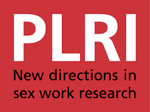Article in BMC Public Health 2011, 11:700.
Background
Concerns have been raised that marginalised populations may not achieve adequate compliance to antiretroviral therapy. Our objective was to describe the long-term virological, immunological and mortality outcomes of providing highly active antiretroviral therapy (HAART) with strong adherence support to HIV-infected female sex workers (FSWs) in Burkina Faso and contrast outcomes with those obtained in a cohort of regular HIV-infected women.
Methods
Prospective study of FSWs and non-FSWs initiated on HAART between August 2004 and October 2007. Patients were followed monthly for drug adherence (interview and pill count), and at 6-monthly intervals for monitoring CD4 counts and HIV-1 plasma viral loads (PVLs) and clinical events.
Results
95 women, including 47 FSWs, were followed for a median of 32 months (interquartile range [IQR], 20-41). At HAART initiation, the median CD4 count was 147 cells/ul (IQR, 79-183) and 144 cells/ul (100-197), and the mean PVLs were 4.94 log10copies/ml (95% confidence interval [CI], 4.70-5.18) and 5.15 log10 copies/ml (4.97-5.33), in FSWs and non-FSWs, respectively. Four FSWs died during follow-up (mortality rate: 1.7 per 100 person-years) and none among other women. At 36 months, the median CD4 count increase was 230 cells/ul (IQR, 90-400) in FSWs vs. 284 cells/ul (193-420) in non-FSWs; PVL was undetectable in 81.8% (95% CI, 59.7-94.8) of FSWs vs. 100% (83.9-100) of non-FSWs; and high adherence to HAART (>95% pills taken) was reported by 83.3% (95% CI, 67.2-93.6), 92.1% (95% CI, 78.6-98.3), and 100% (95% CI, 54.1-100) of FSWs at 6, 12, and 36 months after HAART initiation, respectively, with no statistical difference compared to the pattern observed among non-FSWs.
Conclusions
Clinical and biological benefits of HAART can be maintained over the long term among FSWs in Africa and could also lead to important public health benefits.
(Provisional abstract authors’ own)
Author:
Charlotte Huet, Abdoulaye Ouedraogo, Issouf Konate, Isidore Traore, Francois Rouet, Antoinette Kabore, Anselme Sanon, Philippe Mayaud, Philippe Van de Perre and Nicolas Nagot

